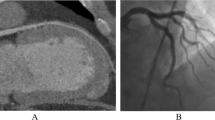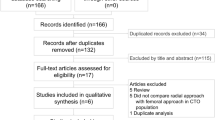Abstract
This study aimed to investigate the preferences of patients who underwent both transradial access (TRA) and transfemoral access for percutaneous coronary interventions (PCIs). The primary focus was on understanding patient preferences and satisfaction with each method to contribute insights into the choice of arterial access in coronary interventions. A single-center prospective study was conducted, including patients who had previously undergone either femoral or radial access for PCI and subsequently chose the alternative access for a second procedure. A comprehensive questionnaire with 13 inquiries was administered to 100 eligible patients, covering aspects such as procedural comfort, pain, embarrassment, and recovery time. The study received ethical approval, and informed consent was obtained from all participants. Among the 100 surveyed patients, all of whom had experienced both TRA and transfemoral access, a unanimous preference for TRA was observed. Patients reported TRA as less stressful, less embarrassing, and less painful both peri- and post-procedurally. Notably, 98% of participants indicated faster recovery and earlier feeding after TRA angiography. No major complications were reported, supporting the safety of TRA. The findings strongly advocate for transradial access as the preferred method for coronary interventions, emphasizing the importance of patient satisfaction in choosing arterial access. The study underscores TRA’s advantages in terms of patient comfort, recovery time, and overall preference, suggesting its incorporation as a routine method for PCI procedures.
Similar content being viewed by others
Data Availability
All data generated or analyzed during this study are included in this published article (and its supplementary information files).
Code Availability
The custom code and software applications used in this study adhere to field standards and support the published claims. The authors commit to making all relevant data, materials, and code associated with this research available to the scientific community. Readers and interested parties may request access to the code by contacting the corresponding author, Dr. Hüseyin Tezcan (email: drhuseyintezcan@hotmail.com), or Dr. Zafer Büyükterzi (email: buyukterzizafer@hotmail.com).
References
Campeau L. Percutaneous radial artery approach for coronary angiography. Cathet Cardiovasc Diagn. 1989;16(1):3–7. https://doi.org/10.1002/ccd.1810160103.
Kiemeneij F, et al. A randomized comparison of percutaneous transluminal coronary angioplasty by the radial, brachial and femoral approaches: the access study. J Am Coll Cardiol. 1997;29(6):1269–75. https://doi.org/10.1016/s0735-1097(97)00064-8.
Hamon M, et al. Consensus document on the radial approach in percutaneous cardiovascular interventions: position paper by the European Association of Percutaneous Cardiovascular Interventions and Working Groups on Acute Cardiac Care** and Thrombosis of the European Society of Cardiology. EuroIntervention. 2013;8(11):1242–51. https://doi.org/10.4244/EIJV8I11A192.
Howe MJ, et al. Underutilization of radial access in patients undergoing percutaneous coronary intervention for ST-segment-elevation myocardial infarction: insights from the Blue Cross Blue Shield of Michigan Cardiovascular Consortium. Circ Cardiovasc Interv. 2015;8(5): e002036. https://doi.org/10.1161/CIRCINTERVENTIONS.114.002036.
Gutierrez A, et al. Adoption of transradial percutaneous coronary intervention and outcomes according to center radial volume in the Veterans Affairs Healthcare system: insights from the Veterans Affairs clinical assessment, reporting, and tracking (CART) program. Circ Cardiovasc Interv. 2013;6(4):336–46. https://doi.org/10.1161/CIRCINTERVENTIONS.113.000110.
Feldman DN, et al. Adoption of radial access and comparison of outcomes to femoral access in percutaneous coronary intervention: an updated report from the national cardiovascular data registry (2007–2012). Circulation. 2013;127(23):2295–306. https://doi.org/10.1161/CIRCULATIONAHA.112.000536.
Jolly SS, et al. Radial versus femoral access for coronary angiography and intervention in patients with acute coronary syndromes (RIVAL): a randomised, parallel group, multicentre trial. Lancet (London, England). 2011;377(9775):1409–20. https://doi.org/10.1016/S0140-6736(11)60404-2.
Collet J-P, et al. 2020 ESC Guidelines for the management of acute coronary syndromes in patients presenting without persistent ST-segment elevation. Eur Heart J. 2021;42(14):1289–367. https://doi.org/10.1093/eurheartj/ehaa575.
Louvard Y, et al. Coronary angiography through the radial or the femoral approach: the CARAFE study. Cathet Cardiovasc Intervent. 2001;52(2):181–7. https://doi.org/10.1002/1522-726x(200102)52:2.
Rao SV, et al. A registry-based randomized trial comparing radial and femoral approaches in women undergoing percutaneous coronary intervention: the SAFE-PCI for Women (Study of Access Site for Enhancement of PCI for Women) trial. JACC Cardiovasc Interv. 2014;7(8):857–67. https://doi.org/10.1016/j.jcin.2014.04.007.
Cooper CJ, et al. Effect of transradial access on quality of life and cost of cardiac catheterization: a randomized comparison. Am Heart J. 1999;138(3 Pt 1):430–6. https://doi.org/10.1016/s0002-8703(99)70143-2.
Reddy BK, et al. Randomized comparison of rapid ambulation using radial, 4 French femoral access, or femoral access with AngioSeal closure. Cathet Cardiovasc Intervent. 2004;62(2):143–9. https://doi.org/10.1002/ccd.20027.
Valgimigli M, et al. Radial versus femoral access in patients with acute coronary syndromes undergoing invasive management: a randomised multicentre trial. Lancet (London, England). 2015;385(9986):2465–76. https://doi.org/10.1016/S0140-6736(15)60292-6.
Chodór P, et al. RADIal versus femoral approach for percutaneous coronary interventions in patients with acute myocardial infarction (RADIAMI): a prospective, randomized, single-center clinical trial. Cardiol J. 2009;16(4):332–40.
Kok MM, et al. Patient preference for radial versus femoral vascular access for elective coronary procedures: the PREVAS study. Cathet Cardiovasc Intervent. 2018;91(1):17–24. https://doi.org/10.1002/ccd.27039.
Kolkailah Ahmed A, et al. Transradial versus transfemoral approach for diagnostic coronary angiography and percutaneous coronary intervention in people with coronary artery disease. Cochrane Database Syst Rev. 2018;4(4):CD012318. https://doi.org/10.1002/14651858.CD012318.pub2.
Agostoni P, et al. Radial versus femoral approach for percutaneous coronary diagnostic and interventional procedures; systematic overview and meta-analysis of randomized trials. J Am Coll Cardiol. 2004;44(2):349–56. https://doi.org/10.1016/j.jacc.2004.04.034.
Fillingim Roger B, et al. Sex, gender, and pain: a review of recent clinical and experimental findings. J Pain. 2009;10(5):447–85. https://doi.org/10.1016/j.jpain.2008.12.001.
Racine M, et al. A systematic literature review of 10 years of research on sex/gender and experimental pain perception - part 1: are there really differences between women and men? Pain. 2012;153(3):602–18. https://doi.org/10.1016/j.pain.2011.11.025.
Author information
Authors and Affiliations
Contributions
Concept: HT and ZB; design: HT and ZB; supervision: HT and ZB; resource: HT and ZB; materials: HT and ZB; data collection and/or processing: HT and ZB; analysis and/or interpretation: HT and ZB; literature search: HT and ZB; writing: HT and ZB; critical reviews: HT and ZB.
Corresponding author
Ethics declarations
Ethics Approval and Consent to Participate
Informed consent was obtained from all patients in accordance with ethical guidelines of the 1975 Declaration of Helsinki protocol and approved by the Ethics Committee of Necmettin Erbakan University Meram Faculty of Medicine (Approval Number: 2023/4310).
Consent for Publication
Not applicable.
Conflict of Interest
The authors declare no competing interests.
Additional information
Publisher's Note
Springer Nature remains neutral with regard to jurisdictional claims in published maps and institutional affiliations.
Rights and permissions
Springer Nature or its licensor (e.g. a society or other partner) holds exclusive rights to this article under a publishing agreement with the author(s) or other rightsholder(s); author self-archiving of the accepted manuscript version of this article is solely governed by the terms of such publishing agreement and applicable law.
About this article
Cite this article
Tezcan, H., Büyükterzi, Z. Comparative Patient Satisfaction in Coronary Percutaneous Interventions: A Dual Experience with Transradial and Transfemoral Access. SN Compr. Clin. Med. 6, 11 (2024). https://doi.org/10.1007/s42399-024-01642-0
Accepted:
Published:
DOI: https://doi.org/10.1007/s42399-024-01642-0




